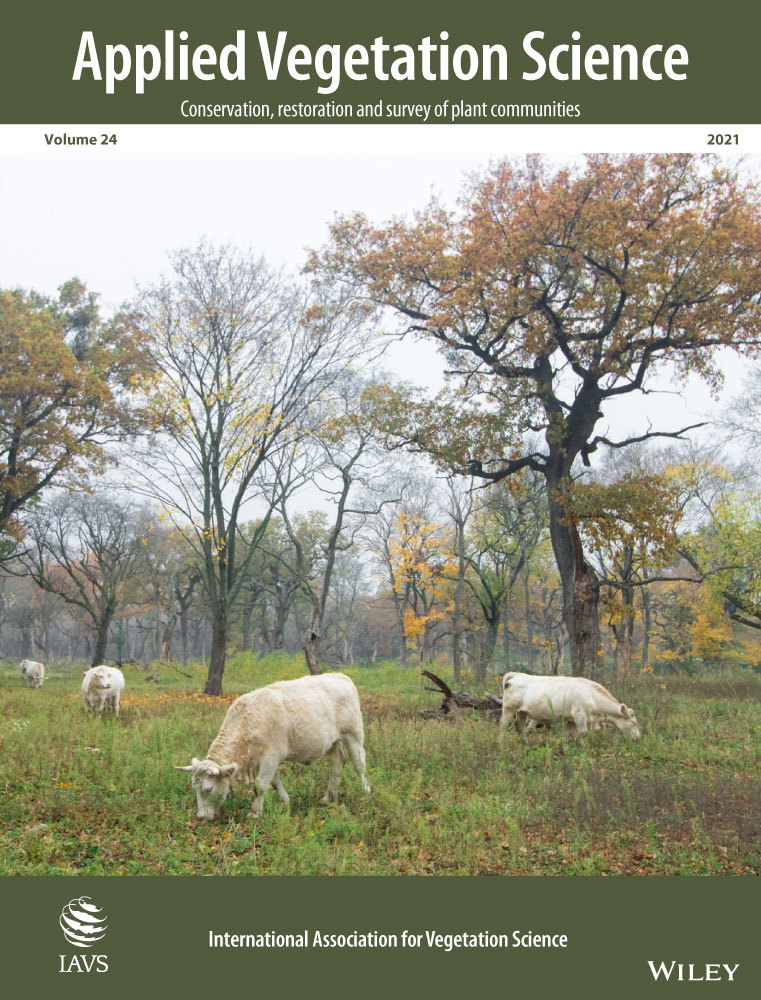Ver ítem
- xmlui.general.dspace_homeCentros Regionales y EEAsCentro Regional La Pampa - San LuisEEA San LuisArtículos científicosxmlui.ArtifactBrowser.ItemViewer.trail
- Inicio
- Centros Regionales y EEAs
- Centro Regional La Pampa - San Luis
- EEA San Luis
- Artículos científicos
- Ver ítem
Crop type and management are key filtering factors of functional traits in the weed communities of regions with contrasting soils and climates
Resumen
Questions: Weed community composition responds to the interactions between environmental and management factors at different scales. The aim of this study was to disentangle the relative contributions of factors defining the composition of weed communities through crop type and agronomic management at the field scale, and climate and soil factors at the regional scale.
Location: The study was carried out in croplands in the phytogeographic provinces of
[ver mas...]
Questions: Weed community composition responds to the interactions between environmental and management factors at different scales. The aim of this study was to disentangle the relative contributions of factors defining the composition of weed communities through crop type and agronomic management at the field scale, and climate and soil factors at the regional scale.
Location: The study was carried out in croplands in the phytogeographic provinces of Espinal and Pampas in central Argentina.
Methods: The floristic and functional compositions of weed communities in maize and soybean crops were characterized and compared with PERMANOVA and NMDS in the two regions. The Espinal and the Pampas differ in soil and climatic characteristics, but crops are grown with similar management strategies due to the widespread use of no-tillage and agrochemicals.
Results. The years of continuous cropping, previous crop and sowing date were the most important factors modulating the species composition of both crops at field scale. Perennials and exotics were more abundant in the Pampas, while natives were more abundant in the Espinal. Moreover, mechanically dispersed species were more abundant in maize crops in the Pampas. Annuals and barochoric species were closely related to the years of continuous cropping in maize. In soybean, more monocotyledonous species were observed in fields previously cropped with maize, while more dicotyledonous and C3 species were observed in fields previously cropped with soybean.
Conclusions: Differences in species composition depend mainly on climatic and biogeographical factors. In contrast, the functional composition of the weed communities in maize and soybean is mostly determined by local factors at field level, which are mostly related to crop identity and agronomic management. The effects of farming practices determine the functional composition of weed communities, which makes crop rotation and thorough cleaning of harvester machines key strategies in the development of weed management.
[Cerrar]

Autor
Fuente
Applied Vegetation Science (First published: 02 November 2021)
Fecha
2021-11
Editorial
Wiley
ISSN
1402-2001
1654-109X
1654-109X
Documentos Relacionados
Formato
pdf
Tipo de documento
artículo
Proyectos
(ver más)
INTA/PAMSL-1282206/AR./Gestión de la innovación para el desarrollo territorial del sur de San Luis.
Palabras Claves
Derechos de acceso
Embargado
 Excepto donde se diga explicitamente, este item se publica bajo la siguiente descripción: Creative Commons Attribution-NonCommercial-ShareAlike 2.5 Unported (CC BY-NC-SA 2.5)
Excepto donde se diga explicitamente, este item se publica bajo la siguiente descripción: Creative Commons Attribution-NonCommercial-ShareAlike 2.5 Unported (CC BY-NC-SA 2.5)

